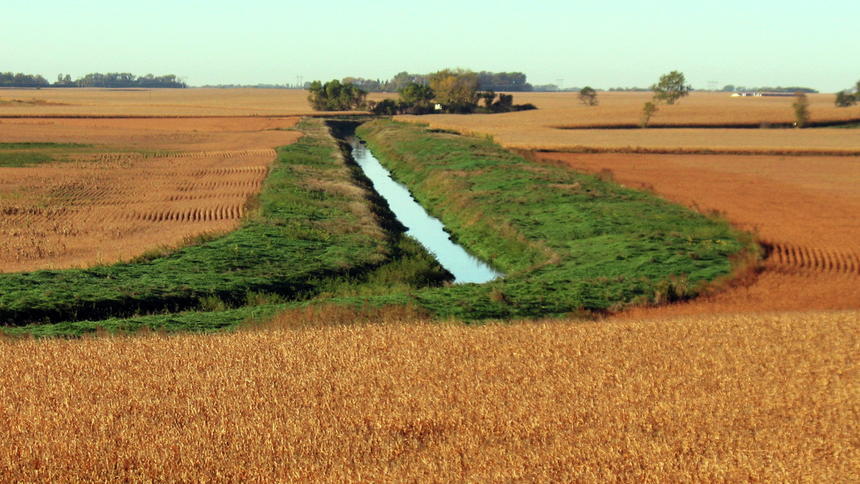Buffers

 What is a Buffer Strip?
What is a Buffer Strip?
Buffer strips are small areas or strips of land in permanent vegetation that help reduce pollutants and excess rain water runoff before it flows into lakes, rivers, streams and ditches. The vegetation in buffers also stabilizes eroding banks, provides habitat for both aquatic and terrestrial animals, protects soil health, and beautifies the landscape.
The Buffer Law was passed in 2015 and requires landowners to install buffer strips along State Protected Waters and Public Drainage Ditches. In addition to providing habitat for many forms of wildlife, buffer strips filter nutrients, sediment, and other pollutants from surface water runoff.
For the most current information please see the state buffer law website; this site provides the most current information on the law. http://www.bwsr.state.mn.us/buffers/
The SWCD offers free technical assistance for: buffer width flagging, planting guidance, compliance certificates, assistance with alternative practices. Use the links below to find out additional information related to the buffer law- if you can’t find the answer to your question call us, we are happy to help!
The Isanti SWCD monitors compliance and reports to the county through the Buffer Compliance Tracking Plan that was adopted on September 18, 2017.
Isanti County Zoning is responsible for the enforcement of the law. Buffer Law State Statue Chapter 85 103F.48.
Wondering if you need to install a buffer? Check this map: https://www.dnr.state.mn.us/buffers/index.html
Requirements of the Law
Public Waters:
- Require a 50-foot average width, 30-foot minimum width continuous buffer of perennially rooted vegetation.
- Buffers are measured from the top or crown of the bank. Where there is not defined bank, measurement must be from the edge of the normal water level.
- Buffers must be in place by November 1, 2017.
Public Drainage Systems:
- Requires a minimum of 16.5 feet of buffer.
- Buffers are measured from the top or crown of the bank.
- Buffers must be in place by November 1, 2018.
The Law Also:
- Requires SWCDs to make compliance determination sand track progress towards compliance.
- Requires SWCDs to notify the organization with jurisdiction over the noncompliant site when it determines a landowner is into compliance.
- Exempts certain land uses and areas from the buffer requirements.
- Allows landowners to meet the buffer requirements through other conservation practices (Alternative Practices) that will protect water quality.
- Requires SWCDs to identify “other waters” for inclusion in local water plans (waters that would benefit from buffers).
- Requires SWCDS to assist landowners in complying with the law.
- Requires the County or the MN Board of Water and Soil Resources (BWSR) to enforce the law.
There are numerous options for landowners to stay in compliance with the buffer law:
- Voluntary planting of perennial vegetation for hay, pasture, wildlife habitat….
- Conservation set aside programs like CRP.
- Installing “Alternative Practices” that meet the requirements.
- Meeting the requirements of and enrolling in the MN Agricultural Water Quality Certification Program (MAWQCP)
How is compliance tracked?
- Compliance is determined on a parcel by parcel, not field by field, basis. If you own multiple parcels along a water body each parcel must meet compliance standards separately. Additionally, each bank of a water body must meet standards independently as well.
- The SWCD is required to track compliance on parcel no more than every three years after November 1, 2018. In order to fulfill our
compliance duties we adopted a compliance tracking plan on September 18th, 2018. The Isanti SWCD ComplianceTracking plan can be read here.
Other Waters
The SWCD in consultation with local water management authorities, has adopted a summary of watercourses for inclusion in the local water management plan. You can read it here: SWCD Other Waters Resolution, Adopted May 16, 2017
Other helpful information related to buffers:
Board of Water and Soil Resources (BWSR) Buffer Page: this link has guidance on topics such as; What to plant in buffers, grazing and haying of buffers, key program dates, buffer measurements, alternative practices. http://bwsr.state.mn.us/buffers/
Five Fact Sheets for Landowners to Improve and Maintain Existing Buffers
